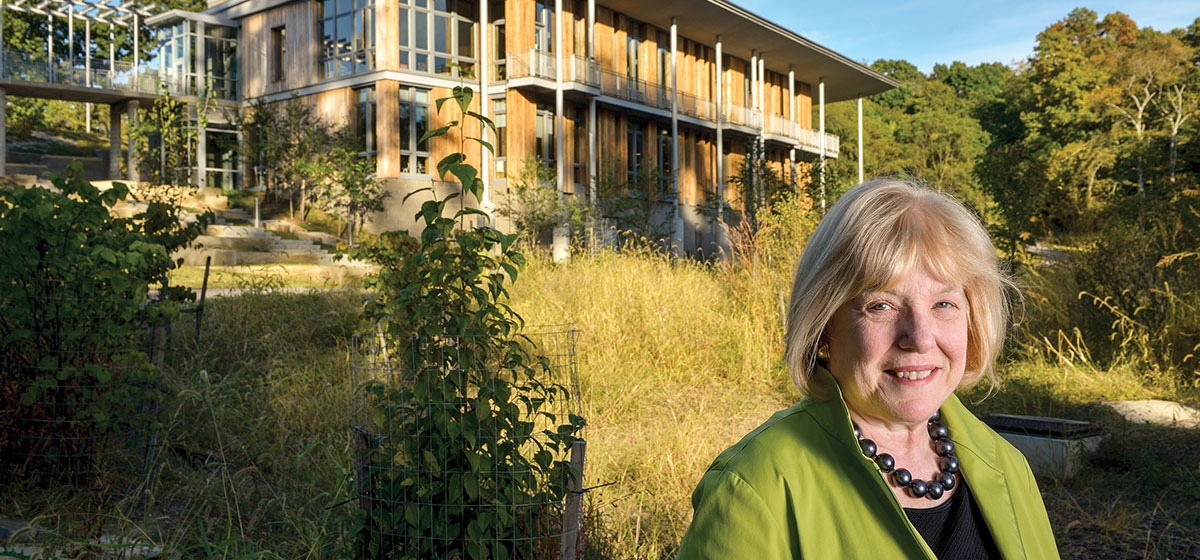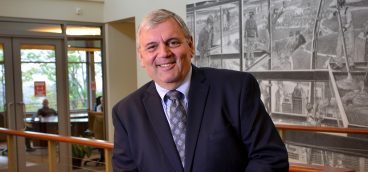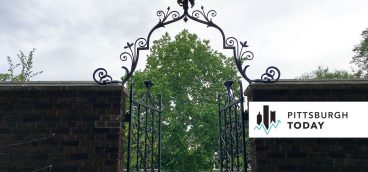
As Meg Cheever said, “The best park in Pittsburgh is the one you are in.” She founded the Pittsburgh Parks Conservancy in 1996 at a time when Pittsburgh was a long way from claiming victory in stemming the tide of decline that still clung to the city. With a band of determined supporters, she stepped into the breach, providing a spark and an idea—that Pittsburghers who enjoyed the city’s parks could help lead a resurgence of the historic greenspaces, many of which were in a state of deterioration.
Q. You’re celebrating 20 years of the Pittsburgh Parks Conservancy. How and why did the Conservancy get started, and what conditions gave rise to the need for the Conservancy?
A. We started 20 years ago focusing on Schenley Park because it seemed rather neglected. Pretty much right way the city requested a pivot. They said, “We recognize the need for a public private partnership, but we need you to not focus exclusively on one park in the East End. We need you to change your name to the Pittsburgh Parks Conservancy and have a broader focus.”
So for the first 10 years, we were asked to focus on the Regional Asset District (RAD)-supported parks: Schenley, Frick, Highland and Riverview. And for the last 10 years, we’ve been urged to work anywhere in the parks system where time and resources permit.
The RAD statute requires a park to have 200 acres for it to be eligible for RAD support. The Allegheny County system has nine parks, all with big acreage, so they’re all supported by RAD. The city park system has 160 parks, but only five are big enough to be supported by RAD. So that’s a lot of parks that are only supported by the city budget and what groups like ours can contribute.
RAD was only 2 years old when we started, and between RAD and ourselves, about $200 million has gone into the city park system. RAD has contributed about $108 million, and their money largely goes to fund operations. So a lot of the staff you see in the RAD parks is funded by RAD. But less than 10 percent of the RAD money goes to capital improvements.
We’ve raised about $92 million and about 80 percent of that has gone into capital improvements. We’ve done 17 capital projects, including Schenley Plaza, Mellon Square, August Wilson Park in the Hill District (formerly Cliffside park), and the Highland Park entry garden.
This is a public-private partnership, and if we hadn’t worked together, we could not have gotten these projects done. As it has worked out, RAD has supported upkeep in the big parks and the Conservancy has supported new investment in the parks.
The Pittsburgh Parks Conservancy is a self-supporting nonprofit. Unlike the Zoo, Phipps and the Aviary, we don’t have a baseline of RAD support. We’re donor-supported. The parks are owned by the city, but they belong to everyone. So we’re hoping we can encourage everyone to feel a responsibility and desire to help care for them and contribute—because we rely on donors and supporters to keep our work going.
Q. Why are parks important, and who uses parks?
A. Nationally and internationally, the view of a parks system is changing. Smart, resilient cities are recognizing that an excellent park system plays a huge role in many different ways.
There’s a whole host of environmental services that parkland provides. The tree canopy provides cleaner air and cools the city. Park trees have a useful life of 60 years, where a street tree might have seven years. And parks are part of the green infrastructure for cities, absorbing storm water and preserving water. And parks provide a different and healthier kind of transportation. People move through the parks in a way that’s healthy for the environment and the individual—walking, running and cycling.
“Nationally and internationally, the view of a parks system is changing. Smart, resilient cities are recognizing that an excellent park system plays a huge role in many different ways.”
—Meg Cheever
Parks are often called the most democratic space in society, and they provide common ground for the mental and physical health of people in cities. Being in green space reduces stress, blood pressure, attention deficit disorder and obesity. And great parks are places of physical beauty that provide spiritual refreshment and even solace after a personal or community loss.
And there’s the whole economic development angle. If you have a neglected park, it drags a neighborhood down. And if you have an excellent park, it increases real estate values. Millennials seem to recognize the benefits of a great park system, and it’s something they want. So if we’re trying to recruit people to Pittsburgh, having a great system of parks is important for our value proposition.
When you take all of those together, you can conclude that a park system is not merely something that’s nice to have. It’s a critical asset that’s in our collective interest to support and improve.
Q. What projects are you proudest of and why?
A. What I’m proudest of is the development of the organization with this really talented and diverse staff. Some of the skillsets that existed in the parks in their heyday 100 years ago had not been funded in the city for a long time.
We’ve had a staff arborist for 12–15 years. We have three horticulturalists, a couple of restoration ecologists, a parks curator, and we have an education staff, which the city used to have. We’ve expanded that program radically.
Now we have over 1,000 volunteers a year and 34 full-time employees. Our budget fluctuates depending on the capital project, but is usually $8 million to $9 million.
Q. How does Pittsburgh compare as a “parks city?” And what’s needed to elevate our stature?
A. What’s needed is resources. Awareness of the importance of the parks system has grown and continues to rise. Our first 17 capital projects have really demonstrated what the parks system could be. But serious resources are needed to put us in the top tier of parks cities. A chart from the Trust for Public Land shows how much public money is spent in the parks systems of various cities per resident, and we’re close to the bottom. Minneapolis, which is one of the cities we benchmark against, is close to the top.
Our city administration is an excellent partner in recognizing the value of the park system and the many ways in which it can contribute to our quality of life. And I think the city does very well with the resources they have, but they don’t have the budget. Where can additional resources come from? What I’d like to see is a broader embrace of this cause so together we can bring in more resources for the system.
Q. What’s the future of the Parks Conservancy?
A. We opened the Frick Environmental Center this fall. That has been a game changer for our organization because probably a third of our staff or more is devoted to the environmental education programs at the new center. It will be an amazing building and campus.
When we started partnering with the city six or seven years ago, two schools were involved in our school partnership program. Now it’s 18 schools. They don’t have to sign up, but they do it because it’s beneficial. Kids get outside and get exposed to nature. They get to see things in the real world, not just read about them in a book, and that makes a difference. They use real scientific instruments to test the water or measure the diameter of trees. And all of that is related to determining the health of the ecosystem and the woodlands. That’s a wonderful opportunity for the youth to participate in and the city to offer. We have an agreement with the city to manage these programs for 15 years, so that’s a big part of our future.
The other thing we’re hoping to really concentrate on in the future is to play a role in helping the city’s storm water issue through the design, construction and maintenance of green infrastructure and park improvements—under the auspices of the Pittsburgh Water & Sewer Authority and the city. We’re balancing the engineering of the storm water projects with how residents use the park—to make something that’s both effective for absorbing water and making a place that’s beautiful and fun to use.
We have a system in place to ensure a geographically equitable parks system, but it’s not at the level it could and should be. We need to make sure we collectively have the resources so people in all neighborhoods can walk or ride their bike or run from neighborhood to neighborhood if they want to. And each place will be more beautiful than the next.
I envision a future in which the parks will elevate real estate values, and people will be trim and healthy from using the parks. Our air will be cleaner, and the parks will help solve the combined sewer overflow problem.
I’d like to see Pittsburgh be famous not just for having a great park system but also as being a city that’s figured out a work/life balance. And the Parks Conservancy can play a key role in making that future a reality.





